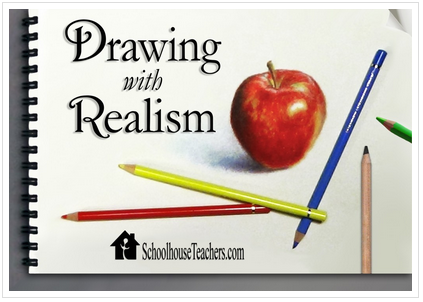Ideas for Dawdlers and Reluctant Kids and Weary Moms
 You’re burnt out on homeschooling.
You’re burnt out on homeschooling.
Your kids are burnt out on homeschooling.
Your 10 year old son can somehow drag one math lesson out all the live-long day and STILL not have it all done!
Aggravated moms, unite! You are not alone!
OK, on the count of three let’s all have a primal scream (into our pillows so we don’t scare the kids). Ready? One…..two…..THREE!
Phew. Alrighty then. Feel a little better? Now that we’ve got THAT out of the way, let’s talk about this.
My stats: Six kids. 5 of them are boys. We’ve been homeschooling for most of the last 18 years. So, you might say that I have a little bitty bit of experience with kids, dawdling, reluctance to get stuff done, and lots of other things (most of them are actually positive!). There are many possible ideas for handling this at various ages and stages, but for today I’m going to address the 10 year old boy scenario.
Yes, I know. He loves minecraft, hates math. Loves Legos, loathes Latin. His idea of fun is to figure out new and creative ways to gross out his sisters and mom. He looks for opportunities to take breaks and fall through the cracks in your system throughout the day. His schoolwork might not be completed by dinnertime. Sounds like a normal boy to me. 🙂
1. Consider taking short breaks. I know, I know: “We already struggle to get everything done! We can’t take breaks!” I feel ya, sister. I really really do. But hear me out: More is not more.
Awhile back I read this interesting article. Basically, some smart folks have figured out that –surprise!– human folks need to take breaks in order to have optimal productivity. Yup. For reals. In fact, they found that for adults, the highest-performing 10 percent of employees worked for 52 consecutive minutes, and then took a 17-minute break. Workers that actually followed a timer for working and breaking were 13% more accurate in their work, too!
So far I don’t know of any similar studies for children, but I would tend to think that children of all ages would need a shorter workspan than 52 minutes before taking a break. (probably getting shorter and shorter duration of workspan as you decrease in age from teens down to preschoolers) While we don’t know of any magic number right now, how about if you pick one and try it? 30 minutes of school stuff/10 minute break! Or 45 minutes of school stuff and a 15 minute break! I don’t know what will work for you, but let a break be your buddy.
2. The Fun Break You already know what they love to do: Minecraft. Legos. Building Stuff. Could you add in a long “fun break” or two during the day that allows for time to do some of these things? Could you “power up” on this by piggy-backing it to something that they tend to dawdle about?
For instance: Maybe your son takes a long time to do math. What if you remove the power struggle over Legos and became his ally? What if you said something like, “I can see that you love building with your legos, and I think that’s a really cool thing for you to do. I would really like to fit it into your school day, but right now it is so hard to get our regular stuff done that I don’t know if we can. Do you think maybe you could get all your math done from 9-9:45? Because then we could give you, like, 30 minutes to play with legos before we do _______. What do you think?”
I’d be all, “Help me help you, buddy.” There wouldn’t be any trace of impending doom coming from me, because the truth is, I would LOVE to let him have a fun break in the day to build and think and explore spacial relationships and all that good stuff that goes along with Legos! Really what he’s getting is time to do more enriching stuff that’s good for his brain. But we call that fun at our house. Don’t you?
What if he can’t get the math done in time for the enrichment period? First, no shaming, mom. Remember: this is a child that is already struggling. You want to help make things better. Observe from a space of kindness and empathy.
- What do you see?
- Is he trying?
- Is he distracted?
- Is he confused?
- Does he need you to sit with him and encourage him along or personally teach the concepts again?
- Does he need more frequent breaks? (It won’t hurt to try and see how that goes!)
- Is his chair uncomfortable?
- Is the table too high for him to sit at comfortably?
- Would a snack help?
- See what you can figure out to help him succeed.
- Could you adjust the time allowance?
- Would he do better with math first thing in the morning or right after lunch?
- Would it be better to do half the math lesson in the morning and the other half in the afternoon?
One of the wonderful things about homeschooling is that you have the opportunity to be mindful, flexible, and creative in meeting the needs of your children and helping them succeed. See yourself as their ally and advocate, not their adversary! They need you in their corner mom, and they need to feel it, too.
3. Easing Back Into It One of the tricky parts of taking breaks or shifting gears in a school day is getting people back together for the next things. May I suggest some transition tricks?
My Gather ’round collection is going to be awesome for this. We take breaks many days to watch a cool or interesting video at the computer. Often it only takes a minute or two, but nobody wants to miss it. All I have to do is say, “Hey guys, who wants to watch this video? It’s supposed to be really cool.” They all come running. I’ve got a zillion awesome, interesting, fascinating, and funny videos to share here that enrich, entertain, and inspire me and my kids. Pick one or two or a handful each day to share with your kids. Do it at the end of a break when you need to gather everybody together. “Hey kids! Check this out!” Then watch the video, let the natural spin-off discussion (or freewrite) happen, and then refocus to the next item you’ve got in front of you.
Reading. I love reading to my kids, and even at ages 11-16 they still tell me it is one of their favorite things that we do. Rather than doing all the reading in one big session, maybe you’d like to read one thing after a break. If they are still munching on their cookies and not totally ready for seat work, cuddle up on the couch and let them finish up while you read to them. After that everyone should be settled and ready to get up and do the next thing.
4. Finding the rhythm: If you’ve got those dawdlers, my recommendation is to try out a work session/break schedule that is reasonable for your kids. Remember: adults thrive at 52 minutes of work/17 minutes of break. Try something like 30-45 minutes of work/10 minutes for short breaks, and see how it goes. These should be guaranteed breaks, not privileges. Just like going to the bathroom and getting a drink of water, your kids, their bodies, their minds all have an actual need for a break. So do you, mom. Take it. Enjoy.
Try offering at least one Fun Break per day that is a 30 minute session for your child to do something he enjoys. Attach it to the schedule so that it is an if/then proposition for him. If you can get your math done by 9:45, then you can take the next half hour to play legos or minecraft or whatever the popular item is at your house. Whatever portion of the time remains when the math is done (including if he gets it done early!), happily allow him the remainder of the fun break. If he didn’t make it this time, be sympathetic, see what you can do to adjust for success next time, and carry on with your day. Help him have pockets of hope and joy and delight throughout his school day!
There probably isn’t one thing that will always work to solve this forever, but a fresh solution is good for however long it’s good for!
If you give this a try, will you leave a comment and let me know how this works for you? What other positive approaches have you found helpful in your own home?
[mashshare]

























